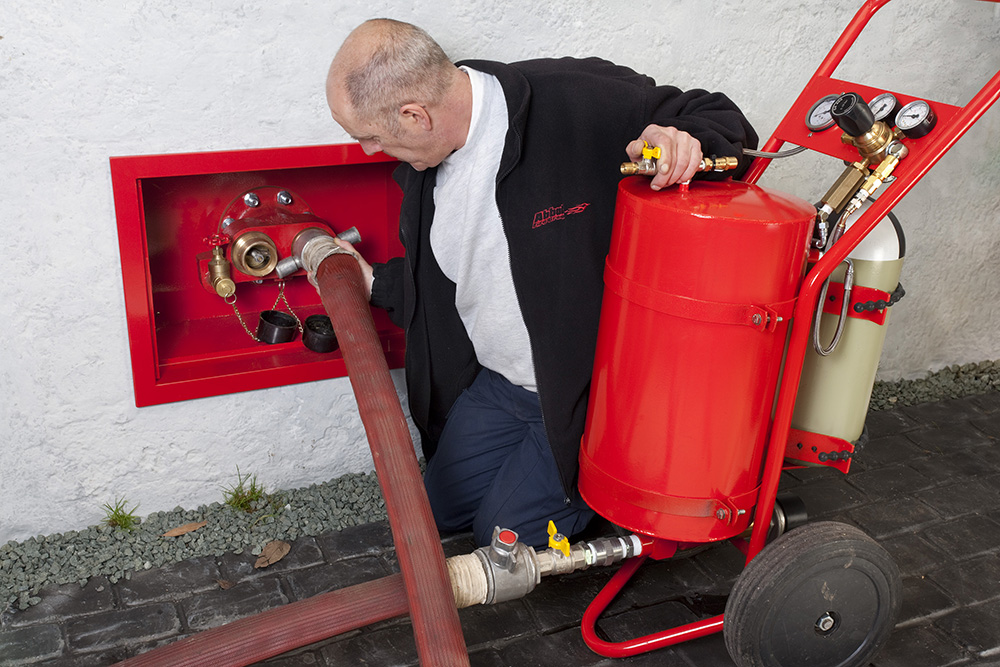Dry risers are required to have a visual inspection every 6 months, and full wet test annually in order to comply with BS9990 regulations. It is important to undertake dry riser testing, as these inspections ensure all component parts are not damaged in anyway, and are therefore in full working order.
If you’re concerned about possible damage from conducting a wet test, Abbot Fire Group can undertake a dry test first to ascertain the integrity of the system. Obviously if this test highlights any problem areas, these can be rectified prior to undertaking the wet test.
British Standards BS9990 also has strict recommendations for the signage requirements for dry risers. As you would expect, we can supply these important industry recognised signs for your dry riser too.
Regular dry riser testing, servicing and maintenance will ensure your dry riser complies with industry regulations.
Dry riser testing
Abbot Fire Group can help with your regular dry riser testing, servicing and dry riser maintenance ensuring the system can be relied upon in the event of a fire.
Call 01280 824111 or email.
What is a dry riser?
A dry riser is an empty pipe which run up the height of a building, they are often a legal requirement for premises over two stories high. Dry riser systems assist the fire brigade to quickly access the vital water supply needed to help control a fire. Dry risers have landing valves on each floor of the building, which the fire brigade connect their hoses to. This enables them to access the water supply which feeds up the vertical pipe.
British Standard BS 9990
The following provides useful information regarding the British Standard for dry risers and dry riser testing.
New Code of practice for Non automatic fire-fighting systems in buildings.
In January 2015 a new code of practice for non-automatic fire-fighting systems in buildings by the British standards institution called BS 9990 was released.
BS9990:2015 gives recommendations for non-automatic fire-fighting systems in buildings. It covers good practice in matters affecting the design, installation, testing and maintenance of such systems including wet and dry fire-fighting mains.
Information about this document
BS9990:2015 is a full revision of the standard with the principal changes being to update the recommendations for:
- Flow tests and pressures
- Rising and falling mains
- Pumps
- Dry riser maintenance
- Shut-off pressures
It is important for the fire protection of a building to be considered as a whole. The provision of fire mains is an essential element of the fire protection systems in large and complex buildings due to the difficulties in providing water supplies at the point of use for fire-fighting and search and rescue. It is essential that these systems be carefully maintained to ensure instant readiness when required.
For more information or to purchase a full version of the new British Standard please visit the BSi Group website.






